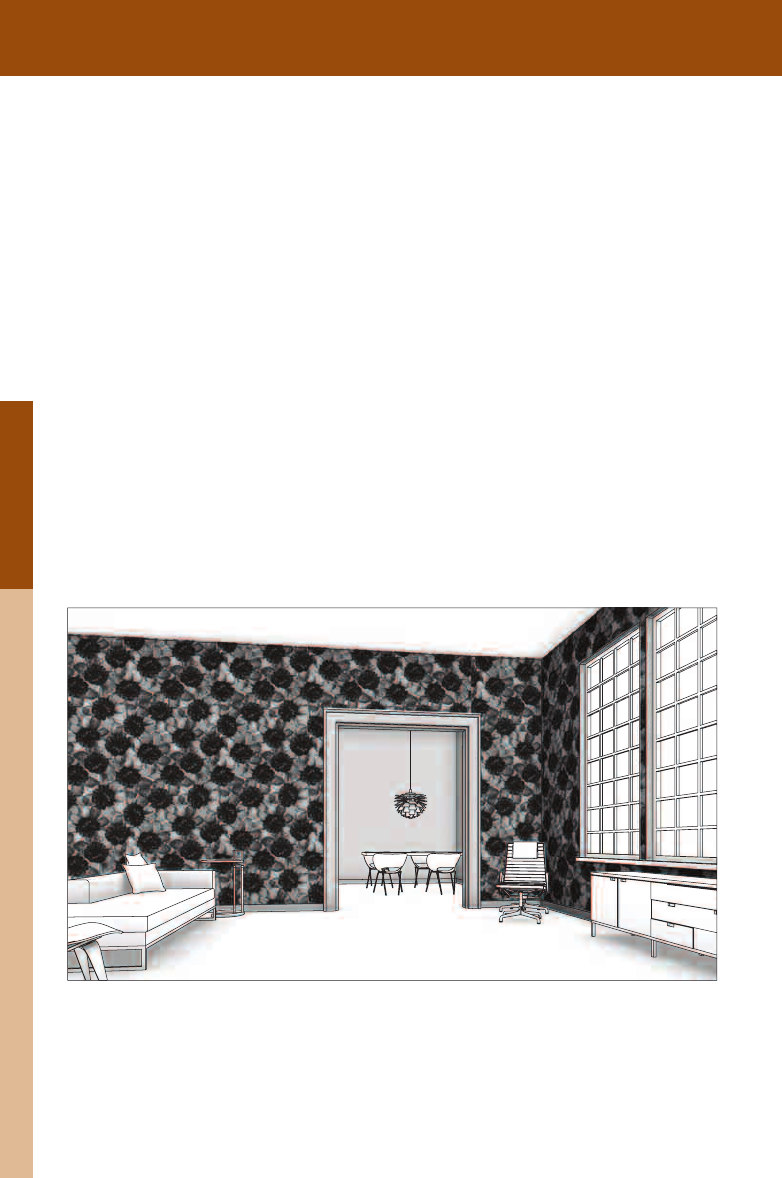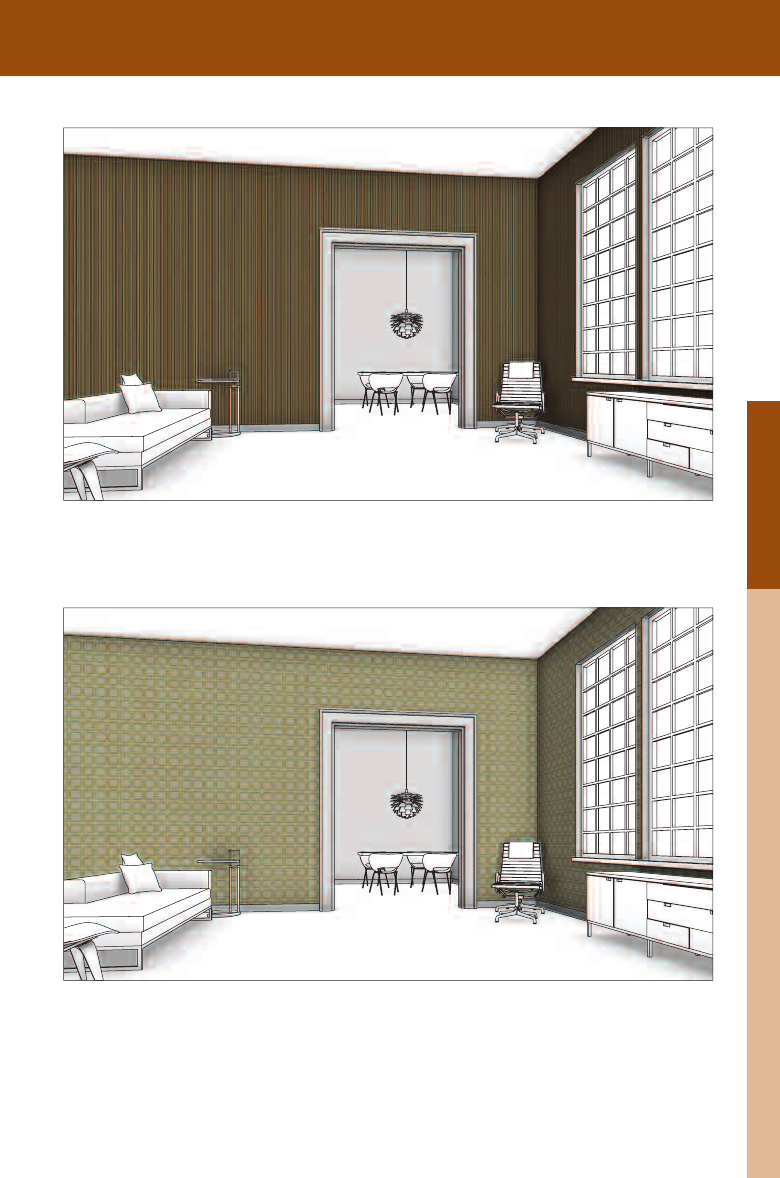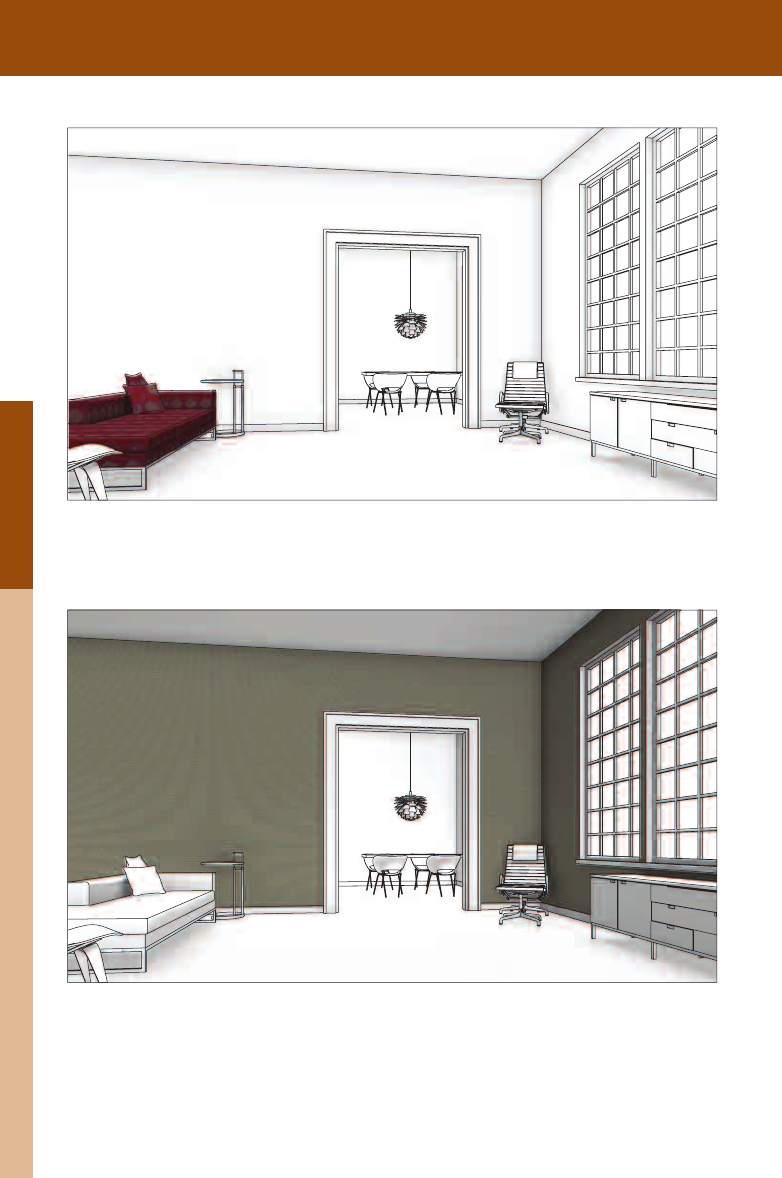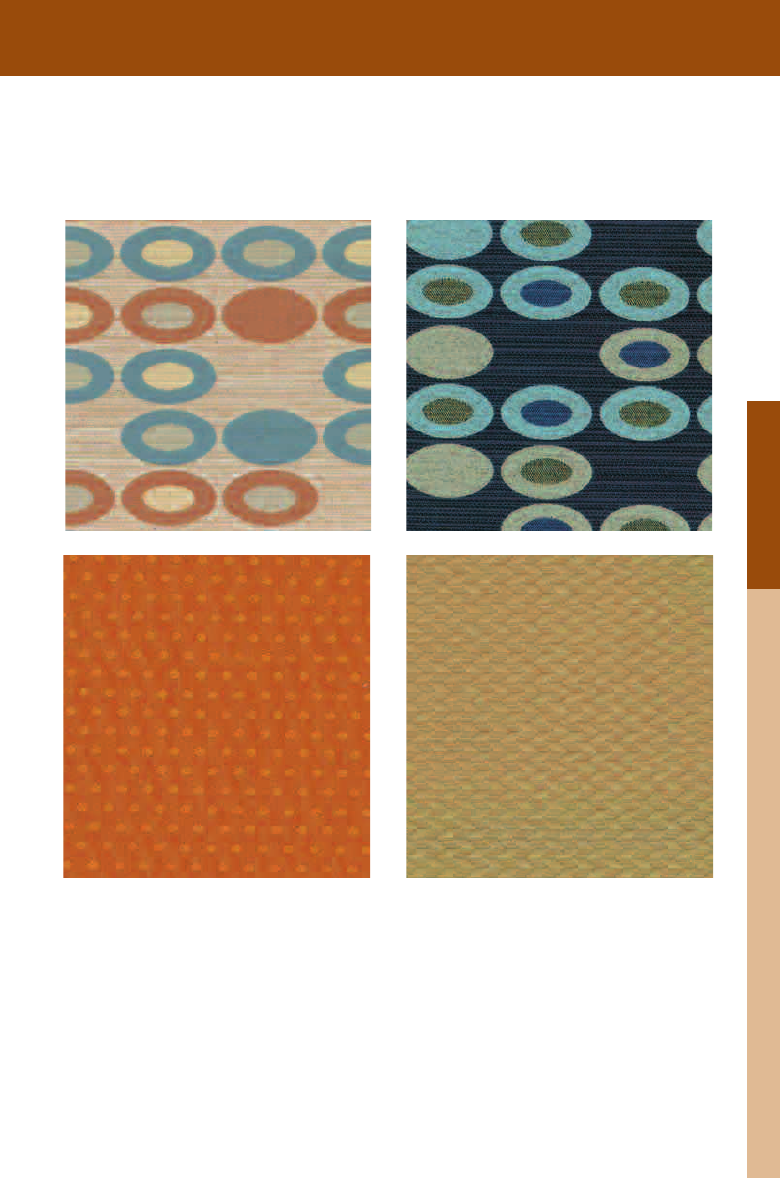
12
Job:02-30056 Title: RP-Interior Design Reference and Specification
#175 Dtp:216 Page:200
(RAY)
200-211_30056.indd 200 3/4/13 7:47 PM
20 0
THE INTERIOR DESIGN REFERENCE + SPECIFICATION BOOK
Text
Chapter 12: Pattern
A pattern is a repetition of elements, typically laid in a grid. Patterns give visual
interest to the surfaces of a room, whether in a textile, wall covering, or ooring.
Although they are commonly associated with textiles, patterns can also be found
in such textural elements as a brick wall. The repetitive elements create balance
and order across surfaces, pleasing the eye, and a skilled interior designer can use
patterns to establish a desired mood. Patterns can be employed in small quantities
to highlight special features in a room or can cover every surface to blend all the
elements together. Although there are no set rules for applying patterns, it is impor-
tant to understand the effects of patterned surfaces on an interior.
EFFECTS OF PATTERNS
Patterned surfaces can alter the proportional readings of a space. Large-scale repeats with
complex patterns and contrasting colors can be appealing in a large room but can overwhelm
a small one. Complex patterns are best left for fabrics or oor surfaces and should be care-
fully considered for wall coverings.
Patterns with vertical lines can add height to a room with low ceilings. Curtains with vertical
lines that extend from oor to ceiling will make a room look taller. Conversely, patterns with
horizontal lines can make a room or a piece of furniture look wider.
Pattern has an effect on the mood of a space. A oral pattern on a surface will create a much
different feeling than a geometric pattern on the same surface. Patterns are expressive of
style and sensibility and immediately set the tone for an interior environment.
Job:02-30056 Title: RP-Interior Design Reference and Specification
#175 Dtp:216 Page:200
(RAY)
200-211_30056.indd 200 3/4/13 7:48 PM

12
Job:02-30056 Title: RP-Interior Design Reference and Specification
#175 Dtp:216 Page:201
(RAY)
Job:02-30056 Title: RP-Interior Design Reference and Specification
#175 Dtp:216 Page:200
200-211_30056.indd 201 3/4/13 7:47 PM
201
Text
and order across surfaces, pleasing the eye, and a skilled interior designer can use
patterns to establish a desired mood. Patterns can be employed in small quantities
elements together. Although there are no set rules for applying patterns, it is impor
-
complex patterns and contrasting colors can be appealing in a large room but can overwhelm
Patterns with vertical lines can add height to a room with low ceilings. Curtains with vertical
lines that extend from oor to ceiling will make a room look taller. Conversely, patterns with
horizontal lines can make a room or a piece of furniture look wider.
Pattern has an effect on the mood of a space. A oral pattern on a surface will create a much
different feeling than a geometric pattern on the same surface. Patterns are expressive of
style and sensibility and immediately set the tone for an interior environment.
Job:02-30056 Title: RP-Interior Design Reference and Specification
#175 Dtp:216 Page:201
(RAY)
Job:02-30056 Title: RP-Interior Design Reference and Specification
#175 Dtp:216 Page:200
200-211_30056.indd 201 3/4/13 7:48 PM

12
Job:02-30056 Title: RP-Interior Design Reference and Specification
#175 Dtp:216 Page:202
(RAY)
200-211_30056.indd 202 3/4/13 7:47 PM
202
THE INTERIOR DESIGN REFERENCE + SPECIFICATION BOOK
Text
The scale of a pattern determines how complex or busy it will look on a surface. For instance,
a pattern with a small repeat may appear as a solid color from across the room and only be
discernible at a closer viewing.
Color plays a large role in pattern. The more contrasting colors in a pattern, the more dynamic
the pattern. If a pattern is made up of different tones of the same color, it may be quite
subtle.
Pattern can make a surface or piece of furniture more pronounced. Pattern can be used strate-
gically to drawn the eye to a particular focal point.
Job:02-30056 Title: RP-Interior Design Reference and Specification
#175 Dtp:216 Page:202
(RAY)
200-211_30056.indd 202 3/4/13 7:48 PM

12
Job:02-30056 Title: RP-Interior Design Reference and Specification
#175 Dtp:216 Page:203
Job:02-30056 Title: RP-Interior Design Reference and Specification
#175 Dtp:216 Page:202
(RAY)
200-211_30056.indd 203 3/4/13 7:47 PM
203
Pattern
Text
The scale of a pattern determines how complex or busy it will look on a surface. For instance,
Color plays a large role in pattern. The more contrasting colors in a pattern, the more dynamic
the pattern. If a pattern is made up of different tones of the same color, it may be quite
subtle.
Texture, too, plays a role in pattern making.
A weave on a monochromatic textile can
create a pattern that adds interest to an
otherwise plain fabric.
Pattern can make a surface or piece of furniture more pronounced. Pattern can be used strate-
Job:02-30056 Title: RP-Interior Design Reference and Specification
#175 Dtp:216 Page:203
Job:02-30056 Title: RP-Interior Design Reference and Specification
#175 Dtp:216 Page:202
(RAY)
200-211_30056.indd 203 3/4/13 7:48 PM
Get The Interior Design Reference & Specification Book now with the O’Reilly learning platform.
O’Reilly members experience books, live events, courses curated by job role, and more from O’Reilly and nearly 200 top publishers.

